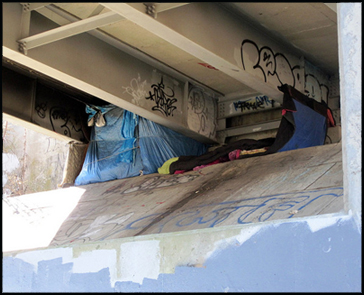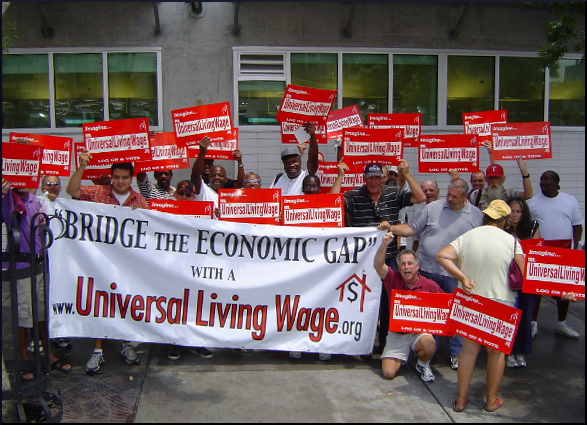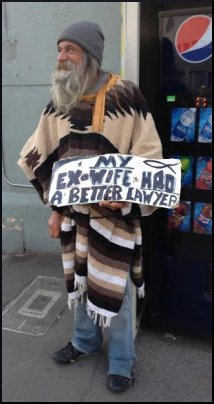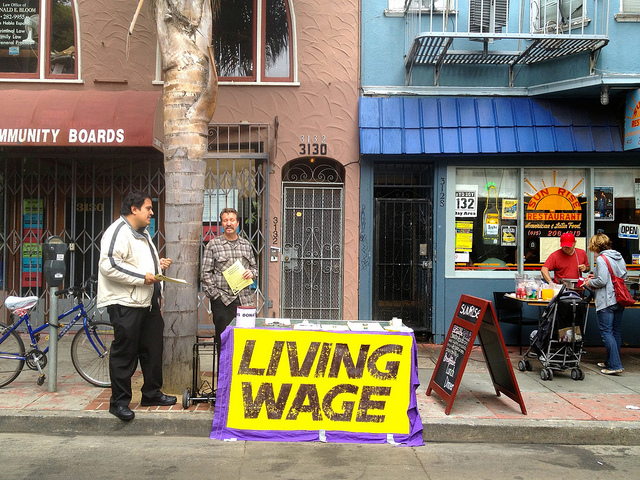
“Money talks, and bull**** walks.” Everybody knows that old saying. Hard cash can get you anything; a mouthful of hot air, not so much. If you believe in something, place your bet — otherwise, hit the road, Jack.
The maxim has another, more subtle layer of meaning. Sometimes the numbers add up to irrefutable fiscal facts, to the point where any sane person or society will see that money obviously must be spent on things like Housing First programs. Sometimes the arguments against spending it in such a way are a mixture of outdated, unsubstantiated ideas and emotional objections. In other words, BS.
As things stand, a lot of money is spent in counterproductive ways, which means wasted. Look at Orlando, Fla., where the Healthcare Center for the Homeless started keeping track of how many people are brought up on charges that might as well read “Breathing While Homeless.” Six months’ research by outreach specialist Brad Sefter found at least 465 such arrests. Then a local television station made inquiries:
WFTV found out Orlando police and the Orange County Jail don’t track the number of arrests for sleeping outside, so there’s no way to tell how much it’s costing taxpayers.
Wait, what? Shouldn’t the reasons for all arrests be part of the public record? Is it now acceptable in America to jail large numbers of people and not even note the reason for posterity? The reporter sought out an individual case:
Ronald Hines, a homeless man living in Orlando, said his crime of sleeping in the wrong place sent him on a downward spiral. “I got arrested for sleeping on the streets,” he said. “I went to jail, they gave me a court cost. A court cost I could not pay because I wasn’t working.” Hines was arrested again a short time later for the unpaid fine.
Eventually, it took a county judge’s access and willingness to do a records search, to find that “homeless arrests are costing that county millions.” This is typical of many cities throughout the land, and an example of how money talks — and it’s saying, This is stupid. There has to be a better way.
This doesn’t even touch on the disturbing subject of people who break the law on purpose, in order to have a place to stay, even if that place has steel bars. What does money say? Find another way. Because this way doesn’t only hurt the individual and mess up his chance to ever pull it together. It harms Mr. and Mrs. Taxpayer. Aren’t there better uses for public funds? Schools? Recreational facilities to prevent childhood obesity? Libraries?
Speaking of which, House the Homeless has focused before on the impact of homelessness absorbed by public libraries. Here is an update from the current issue of The Atlantic, specifically an excerpt from American Psychosis: How the Federal Government Destroyed the Mental Illness Treatment System, by E. Fuller Torrey, MD:
Many libraries have become day centers for mentally ill people who are homeless or living in board-and-care homes. A 2009 survey of 124 public libraries, randomly selected from all parts of the United States, asked about “patrons who appear to have serious psychiatric disorders.” The librarians reported that such individuals had “disturbed or otherwise affected the use of the library” in 92 percent of the libraries and “assaulted library staff members” in 28 percent. Eighty-five percent of the libraries had had to call the police because of the behavior of such patrons.
All that law enforcement costs a bundle of cash. The vicious cycle of jail-street-jail may be an effective employment program for cops, guards and court clerks, but it is the worst solution yet. It becomes more clear every day that communities can save an enormous amount by facing homelessness head-on and creating places for people to live. There is no room for feelings about the people who need to be housed, or judgment about why they need to be housed, or any of that noise. All that stuff is BS that needs to take a walk. When it becomes apparent that a pervasive problem can be handled better, with fewer tax dollars spent, money is talking at the top of its lungs, and money is the voice that needs to be heard.
Reactions?
Source: “Arresting homeless people for sleeping outside costs taxpayers,” WFTV.com, 12/25/13
Source: “Libraries Are the New Homeless Shelters,” TheAtlantic.com, 12/22/13
Image by Just Add Light











